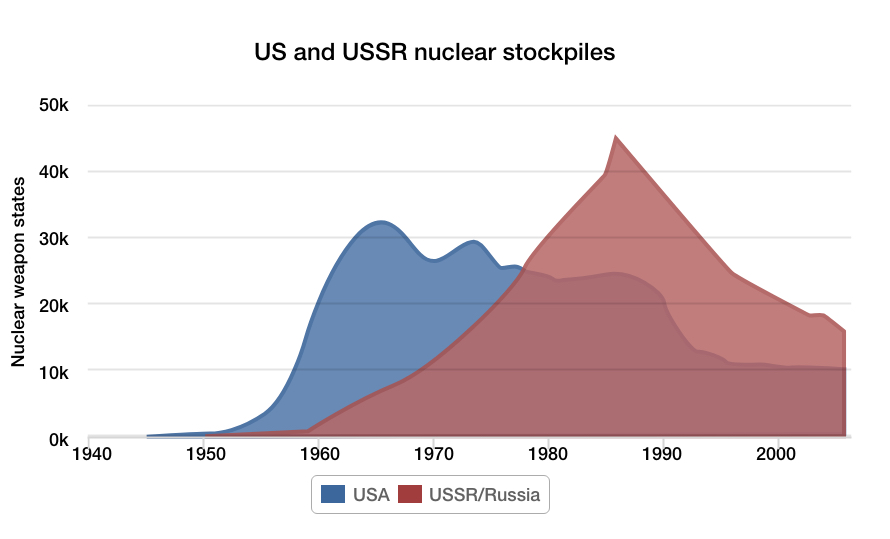An area chart or area graph is based on the line chart but is used to primarily communicate the summation of data rather than represent individual data values, as in line charts. The area between axis and line is usually emphasized with colors, textures or hatchings. The area underneath the line can help one to depict how data progressed with time and can be an excellent way to compare values without going too deep.
[chartdesc]
History of Area Charts
William Playfair (a Scottish engineer and political economist) in 1786, created a chart to indicate how the national debt of England had changed with time and was linked to war. His book, the Commercial and Political Atlas, had different such charts, bringing the first area charts into existence.
[chartimg]
When to use an Area Chart
1Discover trend of magnitude over time
Use the area chart for showing trends over time where the area colored gives a sense of the magnitude of the value. It is of value to use it when the number of data values to be represented are few, as the graph gives a sense of the summation of the value and its change over time.

2Compare between different quantities while analyzing the trend with time
When multiple attributes need to be represented, the first attribute can be plotted as a line with color fill followed by the second attribute, and so on. Identify areas covered by these attributes in a given time and use the overlaps in areas to discover insights.

3Represent proportions of a category and how they combine to make the whole
Use area charts to represent cumulative totals using numbers or percentages over time. Here giving a picture of the part-to-whole relationship of each category, area charts can give an overview of the performance of different categories without overwhelming through numbers, while also portraying the change with time.

Types of Area Charts
1. Step area charts
Area charts which use vertical and horizontal lines to connect the data points in a series forming a step-like progression.
2. Spline area charts
Area charts in which data points are connected by smooth curves instead of straight lines.
3. Stacked area charts
Area charts which show how much each part contributes to the whole amount.
When Not to Use an Area Chart?
1When you need to know the exact values and figures in your data
It can be ambiguous to read far separated data values and when the chart is filled with overlapping areas of colors. Although setting transparency in colors for the chart can be a workaround this, yet for stacked data plots the solution is even more limited.
2When you have a lot of categories for comparison
Do not use an area chart when multiple categories need to be represented and compared since the visibility to understand values can become difficult with overlapping. Although the stacked area chart is comparatively easier to read than the overlapped one yet it would be easier to use a line chart instead.